| GNSS | |

Galileo Technology Centre
|
||||
|
Today Satellite Based Navigation Services play an increasingly important role in modern society. The provision of the navigation, positioning and timing service provided by GPS is widely used. However, the system is under military control, and consequently legal guarantees of operation required by modern business cannot be given. On the other hand the market for GNSS related products is recognised as an important economic factor and service guarantees and liabilities will be needed. Accordingly, the European Commission (EC) and ESA jointly launched initiatives towards an independent European Galileo satellite constellation and associated augmentations and systems including the integration of the EGNOS service. The Galileo system will comprise state-of-the-art global positioning and timing service, integrity service, search and rescue (SAR) as well as commercial services that are still under study. With the architecture defined so far, Galileo will be interoperable with other services and service guarantees can be offered. Local operators may add a number of local services, such as local differential correction signals or availability augmentations. The quality of the signals is monitored by the ground segment and corresponding integrity messages are broadcasted via the Galileo satellites for safety-of-life applications. Orbit ephemeris and clock synchronisation are calculated from measurements made by a worldwide network of stations. The space segment consists of a constellation of 30 satellites (27 + 3 in-orbit spares) distributed over 3 orbital planes in MEO altitudes. As the outcome of the In-Orbit- Validation Phase, there will be 4 Satellites and the associated ground segment to provide initial operations from 2008 onward. The Galileo Full Operational Capability is expected to be achieved 2 years later[1]. Based on the Galileo Services there will arise various downstream applications and value added services on global, regional and local levels. It is expected that along with these services there will also arise the need to provide Galileo service performance information and analysis. In the Galileo project it is planned to give to independent regional Galileo Service Centres access to the Galileo Ground Control Centres (via the Service Provision Facility – SPF) as e.g. pointed out in [2]. Thales and NavPos have jointly started an initiative, supported by the German Aerospace Centre (DLR) to develop a technical facility to satisfy these needs and to support the introduction of Galileo worldwide. This development is called GalTeC – Galileo Technology Centre and could be viewed as one of the downstream Galileo Service Centres. GalTeC missionThe basic scope of GalTeC is to provide services related with the provision of Galileo satellite-only services through the Galileo Operating Company (GOC). However it will also provide services linked to the other GNSS systems – GPS, GLONASS as well as EGNOS. The services will comprise on the one hand, recent and past GNSS function and performance monitoring and on the other hand prediction capability about the near future situation in GNSS services. Today there are already several such services offered for GPS from different sources. The GalTeC philosophy is understood as a single source for such bundled GNSS information provision but with main focus on Galileo. Such that the GalTeC can be found logically between the Galileo Systems (plus other GNSS) and the End User on one hand, also between Galileo System and downstream Commercial Service provider on the other hand. The latter can also be SAR service providers as well as Galileo Regional Integrity providers. For example the Regional Integrity providers would need to assess which Galileo satellites over the Region can transmit the data with which elevations for which time frame. GalTeC architectureThe GalTeC architecture will basically consist of a scalable server/client architecture with several computer systems on which the different softwarebased functions will be realised. The basic HW mounted in a single 19′ rack consists of the three GalTeC servers with integrated mass storage. The various analysis and evaluation software on the GalTeC servers need access to the Internet in order to download actual data from various sources delivering GNSS measurement and evaluated data. The external access to GalTeC is given through the dedicated GalTeC Internet Server. For security reasons the GalTeC Internet services are actually not provided by the GalTeC main server itself. The GalTeC will be connected internally to local users with own working stations for performing individual computations. There will also be one workstation direct at the location of the server. Finally it is planned to foresee a connection to the Galileo Ground Segment via its Service Centre Interface, or to a dedicated Central Galileo Service Centre. Also GalTeC is planned to finally act as one of the first Galileo Service Centres. GalTeC will provide the following features: Prediction and Service Volume SimulationPerformance prediction using a service volume simulation tool based on ephemeris or almanacs Analysis and Products Independent calibration of the major Galileo/ GNSS system parameters (satellite force models, satellite clock models, propagation models, processing models etc.) The development of the related Software packages are performed jointly by Thales and NavPos systems, where the latter is fully responsible for the Simulation (or Prediction) package. The GNSS measurements are used to generate high precision reference data, i.e. Precise Satellite Orbits and Clocks in SP3 format. These are then used to determine Orbit and Clock errors on the basis of GNSS broadcast ephemeris. In parallel the Simulation or Prediction tool uses the collected original broadcast ephemeris and almanac to compute out of the satellite geometry the PVT quality factors for a time and area window. To choose the correct model – input parameters are needed out of the analysis in a back loop for e.g. a single position (that of the reference station). The Analysis functions will then analyse the computed results from the Reference module and present the analysis results in a more visual way (e.g. a classical trade-off: Is vs. Shall vs. Prediction). Then the services functions will be used to generate then the different reports with integrated graphics and final results in usual formats (ASCII, XML, PDF,…).Figure 4 shows the interaction of the main GalTeC modules. |
||||
Reference OD&TSThe reference orbit determination and time synchronisation (OD&TS) is a very important component for GalTeC. It provides the precise reference orbit for further data analysis and processing. The reference orbit determination is performed in GalTeC using raw measurements from GSS stations and monitoring station networks like IGS (International GNSS Service). Also GalTeC own ground stations will collect pseudo-range and carrier phase measurements and provide them offline to GalTeC for further data processing. The major processing steps of reference orbit determination can be illustrated as in figure 5 and 6. The Galileo or generally GNSS satellite orbits are determined using the dynamic method in batch processing mode. Assuming the satellite movement equation is GalTeC can compute the so-called SISE (Signal-in-Space Errors) as follows SISRE is a key performance parameter which can be used for monitoring and validation of the performance of the Galileo broadcast orbit. Based on SISRE, another key performance parameter, SISRA\ (Signal-in-Space Reference Accuracy) can also be computed. SISRA is a minimum standard deviation of the unbiased Gaussian distribution over-bounding SISRE. SISRA can be directly compared with Galileo broadcast SISA and SISMA. Service Level PredictionFor the prediction of the system performance and also for the design and dimensioning of the GNSS Services a simulation function is needed. For this purpose, the NavPos Systems Service Volume Simulator AVIGA® will be used and further developed to a GalTeC Prediction tool in the frame of the GalTeC project. The prediction tool offers the means to predict, analyse and evaluate Galileo Services. A main AVIGA Objective shall be the analysis of the GNSS performance at the user using simulation data. AVIGA offers to run the simulation analysis at point, over area and along routes in terms of In addition, AVIGA shall allow to analyse the GNSS constellation performance in terms of AVIGA simulation will be composed of modules, which will fulfil the following tasks: Space Segment Module: predicts satellites trajectories from standard almanacs, e.g. Almanac YUMA files, computes satellite trajectories from user – defined Keplerian elements; Broadcast Ephemeris or SP3 Precise Ephemeris. Visibility Module: evaluates visibility characteristics of satellite coverage accounting for mask skyline angles; DOP (or Geometry) Module: evaluates DOP and Position Error characteristics of satellite coverage, position accuracy is estimated from the position errors covariance matrix. Availability Module: evaluates availability of DOP and position accuracy. Models of satellite outages and navigation solution errors are used in this model. Integrity/ Continuity Module consists of sub modules which can be also considered as independent modules: RAIM: evaluates availability of the snapshot RAIM FD/FDE methods. SBAS: evaluates availability of the SBAS Protection Levels. Galileo: evaluates availability of protection level according to concept proposed for Galileo system, calculates the pertaining Integrity Risk. Availability of Integrity Risk: analyses availability of Integrity Risk according to concept proposed for Galileo system GBAS/Galileo LE: analyses performance of GPS, Galileo based LAAS systems Route Module: analyses performance along a specified route SISE Analysis Module: assesses satellite orbital and clock errors from SP3 and RINEX Navigation files. Further modules which will be implemented or extended as part of GalTeC Phase II Data Dissemination Module: simulates disseminating of Galileo Messages from Ground Mission Segment via ULS network to world-wide or regional users. End-to-End Service Volume Simulation: This module will allow error components simulation on Galileo element level to analyse the Galileo Service performance and the impact of various errors sources. The prediction of the Galileo Services according to their specification, and also with further parameter settings, shall be done with the GalTeC Prediction Tool. The tool shall also allow the simulation of seldom failures of the system such as erroneous behaviour and outages. Figure 7 and Figure 8 show examples of the GNSS Services Accuracy Performance prediction for the GPS SPS and the Galileo OS. A further very important parameter for the performance assessment of the Galileo Safety of Life Service is the Signal in Space Error (SISE). For the provision of Galileo integrity, the main role is assigned to the integrity flags which are generated in the Integrity Processing Facility. The generation of integrity flags is based on the determination of SISE in real time. The value of SISE depends on the number of ground sensor stations (GSS) and the satellite to GSS errors. A further means to determine and evaluate the SISE performance is done in post-processing. Figure 9 shows the difference between the GPS/SP3 reference orbit and the Broadcast Ephemeris data which were broadcast in real-time. The Prediction Tool shall be used for the dimensioning of services and for the performance assessment in relation to the needed signal bandwidth. The signal bandwidth will probably play an important role in the service transmission cost estimation. The design and dimensioning is needed for the feasibility and cost estimation of a service. An application example for GalTeC will be to offer Service Providers the possibility to check needed data volume and distribution strategies for their planed Services. The GalTeC Service Volume Simulation and Level Prediction Tool offers the means to predict, analyse and evaluate Galileo Services. |
Services and AnalysisThe data analysis will be composed of various processing modules and used for performance analysis in system domain and user domain based on the raw measurements from monitoring station networks and precise ephemeris generated by GalTeC OD&TS. The main purposes of data analysis are The function and data stream are shown in the Figure 11, Figure 12, Figure 13 and Figure 14. At the beginning a twofold PVT (Position/Velocity/Time) solution is executed using in both cases the raw range measurements and then separately using broadcast ephemeris and precise orbits in the other case. This results in a nominal PVT and precise PVT solution which can be compared. The Integrity Analysis will be performed based on different integrity concepts and algorithms for Galileo, SBAS and GPS (RAIM) systems. Integrity bounds (HPL/ VPL) on navigation measurement errors are produced in the module PVT. These bounds together with the residuals generated from PVT are used to determine the confidence levels and related pass/fail criteria. The Performance Analysis will be used to process and analyse the measurements based on GNSS ephemeris for the navigation, receiver and SIS accuracy, focused on the following error analysis: satellite clock errors, satellite orbit errors, ionospheric and tropospheric errors, multipath, interference errors and measurement errors etc.. These Analysis will be complemented by some other Statistical Analysis functions and represented by appropriate Visualisation functions and then be summarised in semiautomatic Report Generation. These formalised reports are the basis for the offered regular GalTeC services. Initial Test Example With GPSBased on the description above, an initial test result using GPS measurements is presented. 24-hour measurements (May 18, 2006) from 39 worldwide deployed IGS stations are used. GalTeC OD&TS used these measurements to generate precise GPS ephemeris called reference orbits with about 18 centimetre accuracy compared with IGS precise ephemeris. The reference orbits will then be used to analyse performance of GPS broadcast ephemeris and generate related key performance parameters such as SISRE and SISRA. The maximum URA (User Range Accuracy) for one GPS satellite for one day from GPS broadcast ephemeris is used in place of SISA. The plots in Figure 15 show the SISRE in satellite orbit domain, clock domain (Figure 16) and observation domain (Figure 17). The satellite clock performance is presented for comparison purpose. Representatively, the initial results only for PRN 8 are shown here. The plots show that URA from GPS broadcast ephemeris almost over-bound the actual SISRE in the observation domain with some exception which may be caused by satellite clock jumps or jumps of the satellite clock corrections. The further analysis on the test results will be prepared in a separated paper. Conclusion and Further WorkGalTeC in its final stage will offer functions which might be expected from a Galileo Service Centre. One of the main capabilities will be the independent validation of Galileo performance and of special interest the global and regional integrity performance. However it will be a prototype to gain experience on the way towards a fully fledged and liable Galileo- or generally GNSS-Service Centre. The first prototype phase of GalTeC has been almost concluded delivering a GalTeC version 1. The GalTeC is introduced to the public already in the prototyping phase to receive first feedbacks already in the design phase as consequently services shall be developed which are considered as useful for various users. The second phase starting in January 2007 will deliver a GalTeC Version 2 in late 2008, just short before Galileo launches its 4 IOV satellites. The first version is dedicated to the development of the Reference Orbit & Clock software using GPS data for input, developing the Simulation capabilities and first Analysis and Visualisation functions. The main work will however be done with the Version 2 development where the Specifications are reviewed and adapted to the latest information available from Galileo (i.e. full Signal and Services ICDs, Mission Requirements etc.) and the (central) Galileo Service Centre. Open questions today are the availability of Galileo Signal (Giove- A and -B) within the project run time and related measurements from several sources. Also open is the availability of the Central Service Centre specification and exchange conditions for information. It is expected that the GJU and shortly the GSA willmake information available. Some limited access is given to the Thales team through participation in the Galileo development and particularly GMS verification programme, such that by end of 2008 a valuable and powerful tool will be available for experimentation. The capabilities will be demonstrated in the Galileo IOV phase. AcknowledgmentsThe authors and project members want to express their gratitude towards the DLR/Bonn for the support of the project. References1. Luis Ruiz, GJU, Galileo Overall Programme Status, Plenary Presentation ION GNSS 2005, Long Beach, Sept. 2005. |
||||||||||||||||||||||||||||||||||||
|
||||||||||||||||||||||||||||||||||||
|


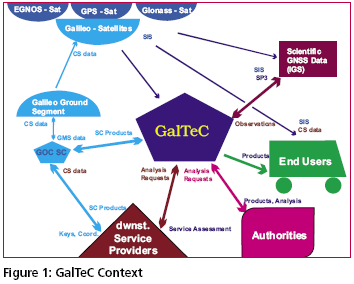
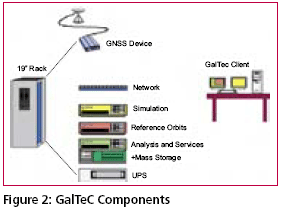
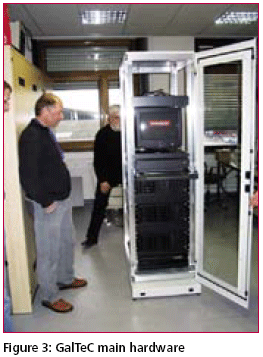
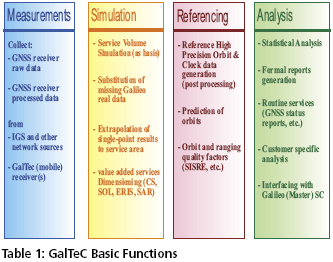
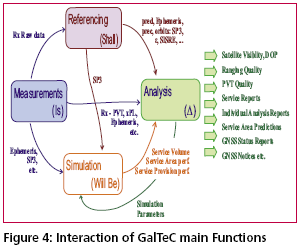
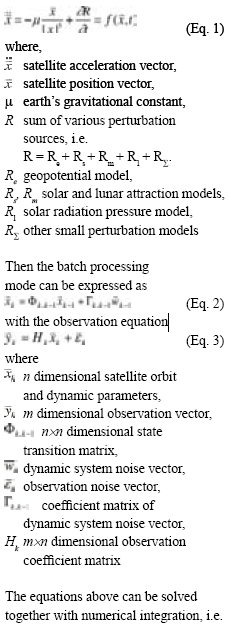
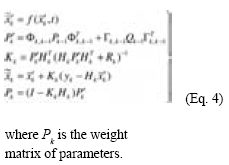
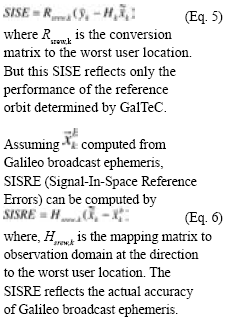
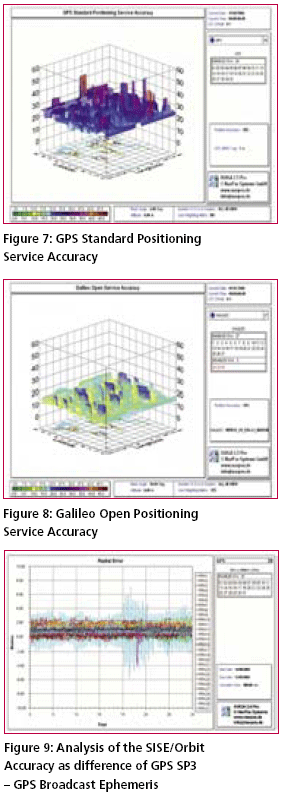
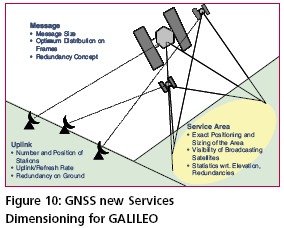
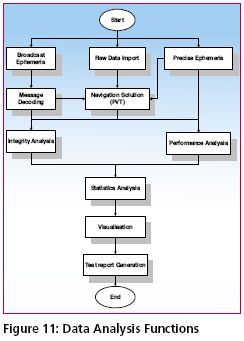
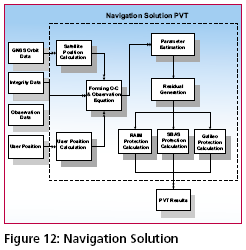
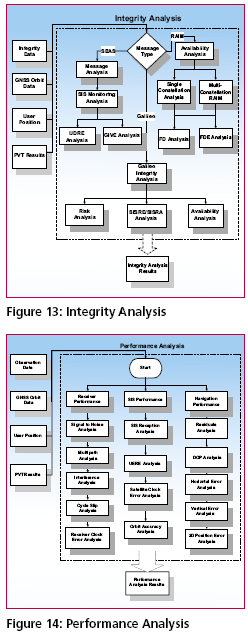
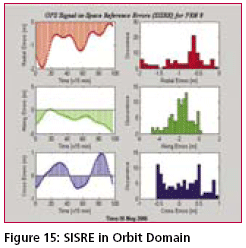
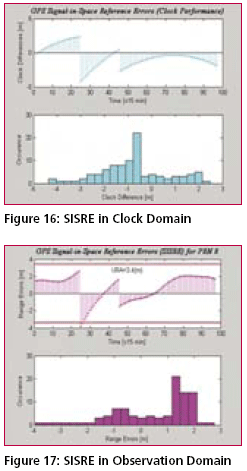














 (No Ratings Yet)
(No Ratings Yet)





